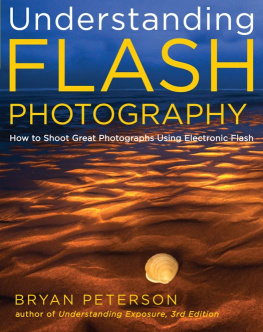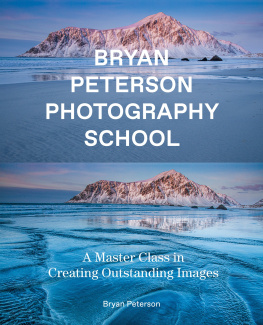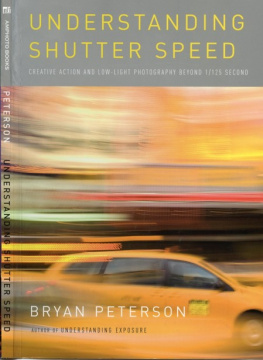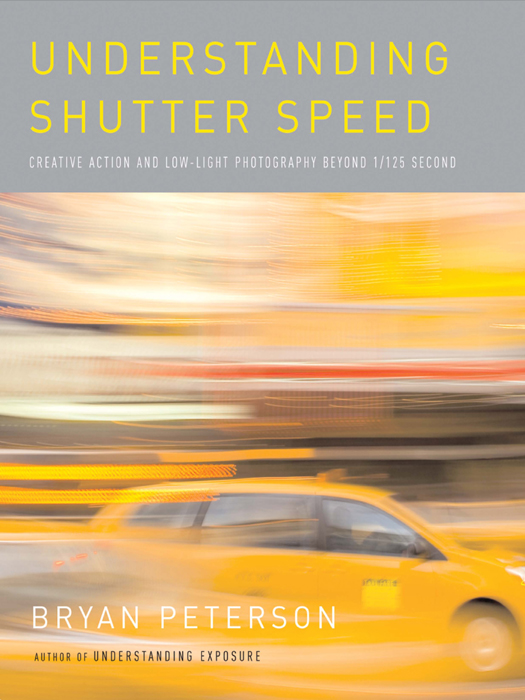
1755mm lens, tripod, ISO 100, 2 seconds at f/8
Acknowledgments
I cant express my gratitude enough to Victoria Craven (editorial director at Amphoto Books) and to Alisa Palazzo and Bob Fillie (my ever-faithful and talented editor and designer, respectively). They all give so much of their time and dedication to my books. Thank you, thank you, thank you again!
First published in 2008 by Amphoto Books
an imprint of the Crown Publishing Group, a division of Random House, Inc., New York.
www.watsonguptill.com
www.amphotobooks.com
Editorial Director: Victoria Craven
Senior Development Editor: Alisa Palazzo
Art Director: Timothy Hsu
Designer: Bob Fillie, Graphiti Design, Inc.
Production Manager: Sal Destro
Cover design by Gabriele Wilson and Timothy Hsu
Cover photograph by Bryan Peterson
Copyright 2008 Bryan Peterson
Library of Congress Cataloging-in-Publication Data
Peterson, Bryan F.
Understanding shutter speed : creative action and low-light photography beyond 1/125 second / Bryan Peterson.
p. cm.
Includes index.
eISBN: 978-0-8174-0021-7
1. PhotographyExposure. I. Title.
TR591.P52 2008
771dc22
2007030955
All rights reserved.
v3.1
To Harry and Mo
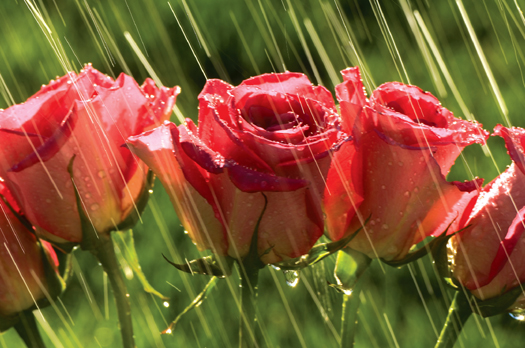
70200mm lens at 200mm, tripod, ISO 100, 1/60 sec. at f/8
Contents
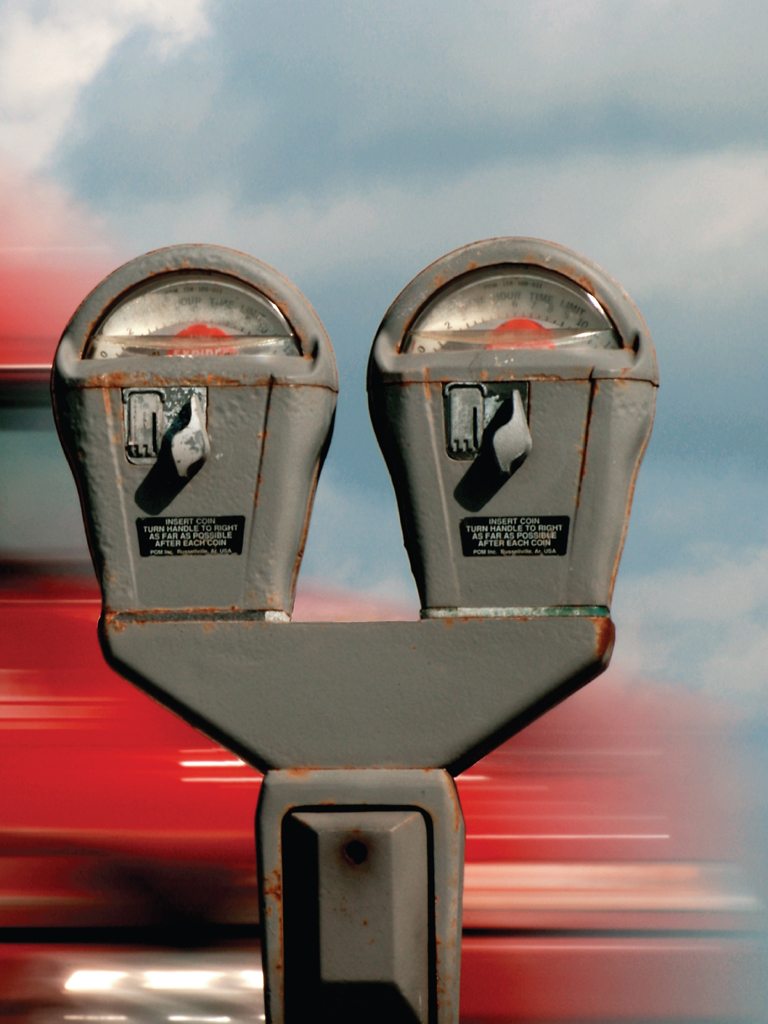
70200mm lens, ISO 100, 1/30 sec. at f/16
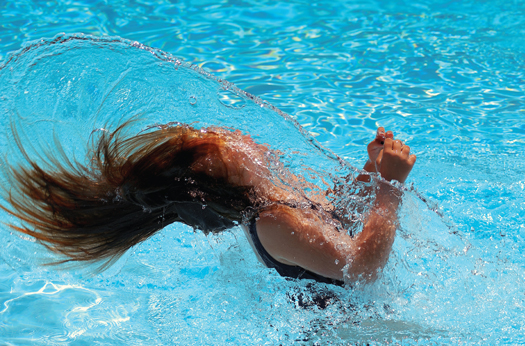
ISO 400, 1/800 sec. at f/11
INTRODUCTION
It was some years ago, back in 1977 I believe, when I came across this quotation from an unknown source about the topic of time: Today, be aware of how you are spending your 1,440 beautiful moments and spend them wisely. Its amusing that this person was obviously so immersed in, and so consumed by, how he (or she) was spending each moment that he forgot to tell whomever he was speaking to his name.
Looking back at how I was spending my time in 1977, its fair to say that time had less relevance to me than it does today. It could easily be argued that time has simply become more important today because Im getting older, but I would have to disagree if only because I seem to have always valued my time and tried to make the best use of it. And to be clear, Im not really speaking about, or addressing, the issue of saving time or wasting time but rather about the joy of recording time! The irony, of course, is that by recording time via the simple act of pushing a button on a still camera, one can experience the pleasure of time well spent!
I, for one, do believe that there are at least 1,440 beautiful moments (aka each and every minute) in a day; yet I also believe that many of these 1,440 beautiful moments zip right past me, sight unseen, simply because I dont have time to notice or appreciate their fleeting beauty. It has only been in the last several years that Ive found myself making a concerted effort to really become aware of these 1,440 beautiful moments, and although my journey is still in its early stages, its a journey that offers up these moments every day.
Have you done the math? Those 1,440 minutes translate into no less than 1,440 sixty-second exposures! Do you have any idea how beautiful a moment can be when photographed over the course of sixty seconds? A city scene at dusk. A lighthouse atop a cliff just out of range of the assaulting surf.
Then there are the 86,400 seconds that make up those 1,440 beautiful moments. And here is one amazing fact thats guaranteed to make you realize just how fleeting time can be: 1/1000 sec. is a perfect shutter speed to use when you wish to capture in exacting sharpness many of lifes daily 1,440 beautiful moments. So, how many one-thousandths does it take to make a second? Well, 1,000, of course! That also means that it takes another 60,000 one-thousandths to make a minute and 360,000 one-thousandths to make an hour. And that can only mean that those 1,440 beautiful moments are composed of exactly 8,640,000 one-thousandths. Yikes! Every day, we, as photographers, are afforded the opportunity to freeze, in exacting sharpness, 8,640,000 action-filled images. And to think that you have often lamented that you cant find anything to shoot! I concur that some of lifes beautiful moments are often too quick, too fleeting, to be seen by the human eye, but certainly, we can find other moments among the 8,640,000 daily opportunities to record an exciting image.
Most every momentno matter how big or smalloffers up a subject in a perpetual state of motion: jumping, slapping, hitting, running, walking, flying, diving, leaping, dancing, reaching, throwing, falling, sliding, pulling, pushing, slamming, blowing, splashing, beating, fluttering, bouncing, turning, exploding, spinning, breaking, smashing, splattering, or crashing. All of this motion translates into energy, and a well-executed photograph that conveys that motion is a photograph that is filled with both motion and emotion!
Whether it be in a book or magazine, all of us have seen and felt the energy of two soccer players, caught in midair, heading a soccer ball, rendered in an image in exacting sharpness! Whoa, look at that! we remark in a tone of utter amazement. And all of us have seen images that convey the angelic and cotton-candy-like effect of a waterfall shot at a slow shutter speed. I find it so soothing to look at is often the response. Unlike motionless photographs (the proverbial close-up of a flower, for example), well-executed motion-and-emotion-filled images are forever on the move. And it is this movement and the energy that is conveyed that appeal to our very own psychological need to have movement under our feet. Without movement, we die, and perhaps that is also why photographers seem to enjoy a better-than-average level of mental health. We are pushed to record, to create, and no other images are as life-affirming as motion-filled images. These are the images that celebrate life on the move with the greatest of exclamations.
There are, of course, a number of ways to capture movement, and the methods you choose to convey that movement will, in large measure, be determined by the shutter speed you choose and the movement of the subject before you. The motion-and-emotion-filled images that result can be felt as soothing, calming, seething, shocking, surprising, or frightening. There are also ways to convey movement with subjects that dont ordinarily move (for example, a large boulder stuck in a hillside). In effect, with the right shutter speed, you get to play God and breathe life into dead subjects by the simple act of zooming your lens while shooting at a slow shutter speed.
Perhaps youre not sure which shutter speed to use. Perhaps youre not sure which lens to use. Perhaps youre not sure what your exposure should be. Perhaps youre not sure about your overall composition. Perhaps youre not sure where to take your meter reading from. Perhaps youre at that place where you arent even aware that motion-filled images exist. All of the known techniques for capturing, conveying, and creating movement in a single still photograph are covered in this book in a simple, clear, and concise format, with examples taken dawn to dusk, into the dark of night, and with available light, flash, strobes, and other sources of light. And as has been the case with my other photography books, and where I feel its most necessary, Ive chosen to present before-and-after pairs of images that clearly show distinct differences in exposure, composition, lens choice, or lighting. Of course due to page limitations, Im not able to show you




